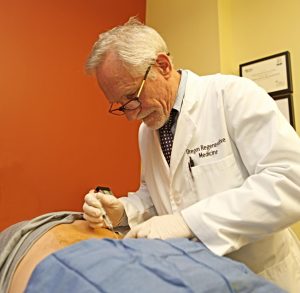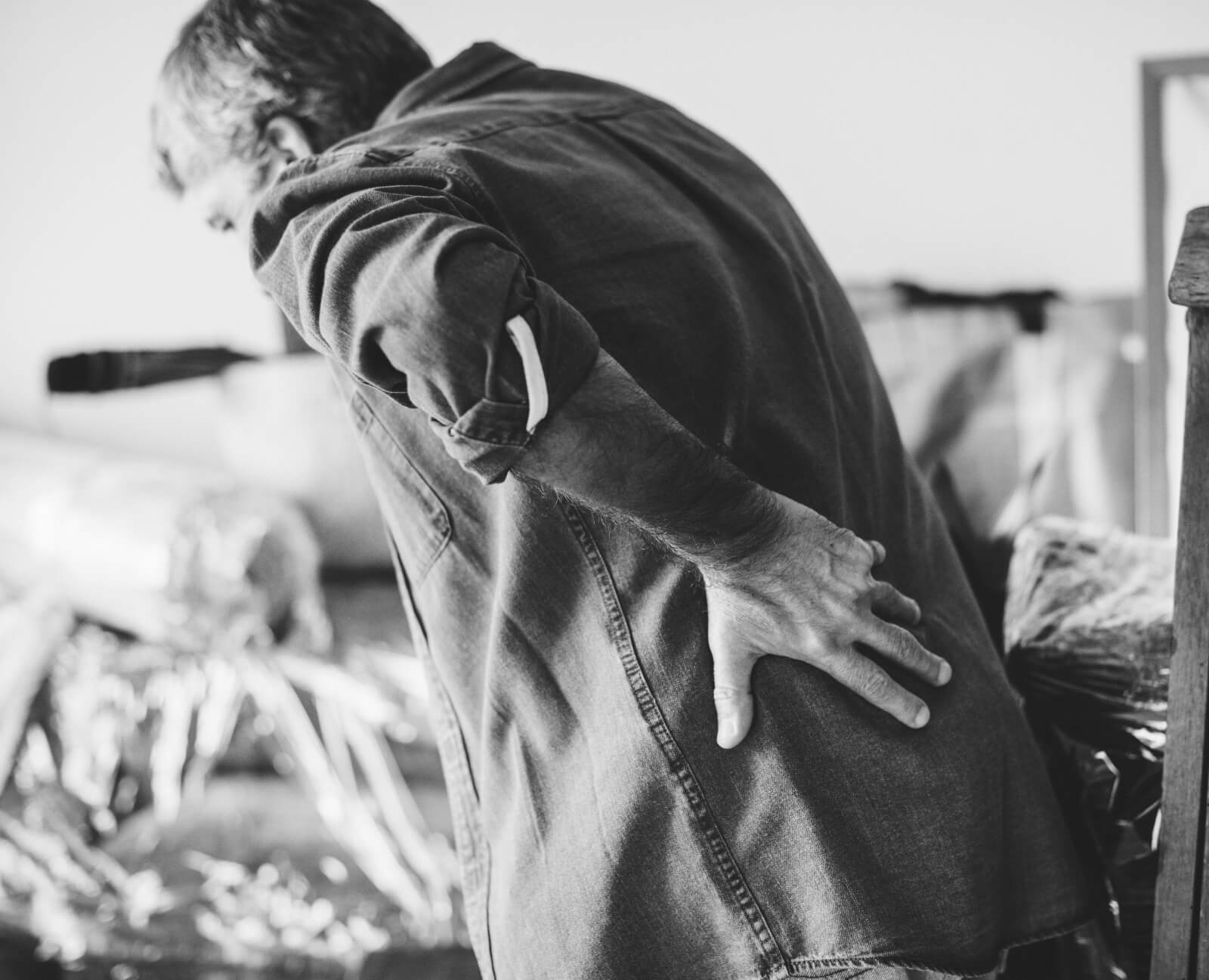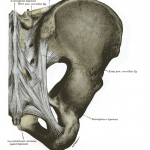by Dr. Noel Peterson, ND, DAAPM
One of the most common causes of low back pain is sacroiliac sprain, and Prolotherapy and PRP injections continue to be the most effective and definitive treatment I have seen in my 40+ years of practice. Sacroiliac, iliolumbar, and lumbosacral ligaments are easily sprained and overstretched, destabilizing the lower back. Instability triggers spasms of the muscles whose job it is to move and at the same time reinforce the back. Hypertonic sacrospinalis muscles become swollen and cause constant and distracting pain in the low back and sacrum, with referred sciatic nerve pain patterns that run down the leg and into the knees and feet.
Over time this sacroiliac instability initiates arthritic changes in the joint surfaces and calcification in the fibro-elastic connective tissue, changing elastic tissue that responds dynamically to stress by expanding and retracting, to tissue that is brittle, stiff and loses the ability to contract or rebound to its original shape and form. Loss of the dynamic regulation of sacroiliac movement triggers a spasm of the muscles, which have their fibro-osseous origin on the sacrum and ileum. Pain spreads to the lateral hip rotors. Hypertonic gemellus, obturators, and piriformis muscles restrict hip joint movement and can compress the sciatic nerve as it courses through and between them. Sciatic nerve compression and swelling and the symptoms of sciatica, often causing aching pains, numbness, and weakness in the hip, thigh, knee, lower leg, and foot.
When Pam M. first consulted with me, her chronic low back pain fit the profile of sacroiliac injury. She had been an accomplished triathlete until she overtrained and developed sacroiliac dysfunction. As her pain and disability worsened, she not only could no longer run, she had gradually given up more and more activities. Walking, sitting, and virtually any upright activities caused pain, and she had abandoned all recreational physical activities and had become reliant on pain and anti-inflammatory drugs.
She had already tried physical therapy, chiropractic and orthopedic consultations, which led to multiple X-rays, MRI scans, and eventually steroid injections into her SI joints. Steroids provided short-term reprieves to her pain but had to be repeated at more and more frequent intervals until these too failed. Multiple drug regimens for pain, inflammation, and sleep replaced exercise and family outings. In chronic sacroiliac dysfunction, muscles attempt to compensate for weak ligaments by “splinting” the area.
The reflex spasm of the quadratus lumborum muscle restricts movement and causes pain in the lower back. The iliopsoas muscle is recruited in further attempts to reinforce the sacroiliac joint, causing abdominal and lumbar pain, and often hyperlordotic and lumbar pain and spasm. Disuse causes loss of muscle mass in the muscles of locomotion as well as core muscles. The patient’s quality of life is severely impacted.
In Pam’s case, new X-rays revealed osteoarthritic changes in the sacroiliac joints. Recovery would require a multi-pronged approach beginning with Prolotherapy injections to regenerate the sacroiliac, iliolumbar, and lumbosacral ligaments. And she had to stop all anti-inflammatory drugs, as these medications inhibit the collagen synthesis that Prolotherapy induces. She began a focused nutritional supplement protocol, took herbal pain relievers to support repair.

Within weeks she had increased mobility and naturally increased her activities. She became comfortable sleeping again, and for the first time in years slept consistently through the night without pain or sleep medications. Then she resumed a regular low-intensity exercise routine, walking, and hiking and because her pain was gone I had to remind her not to overdo it in the early stages of her regenerative injection treatments.
Has arthritis gone away? I don’t know. For me, the smile on her face is good enough evidence of her recovery. X-rays will just have to wait.




